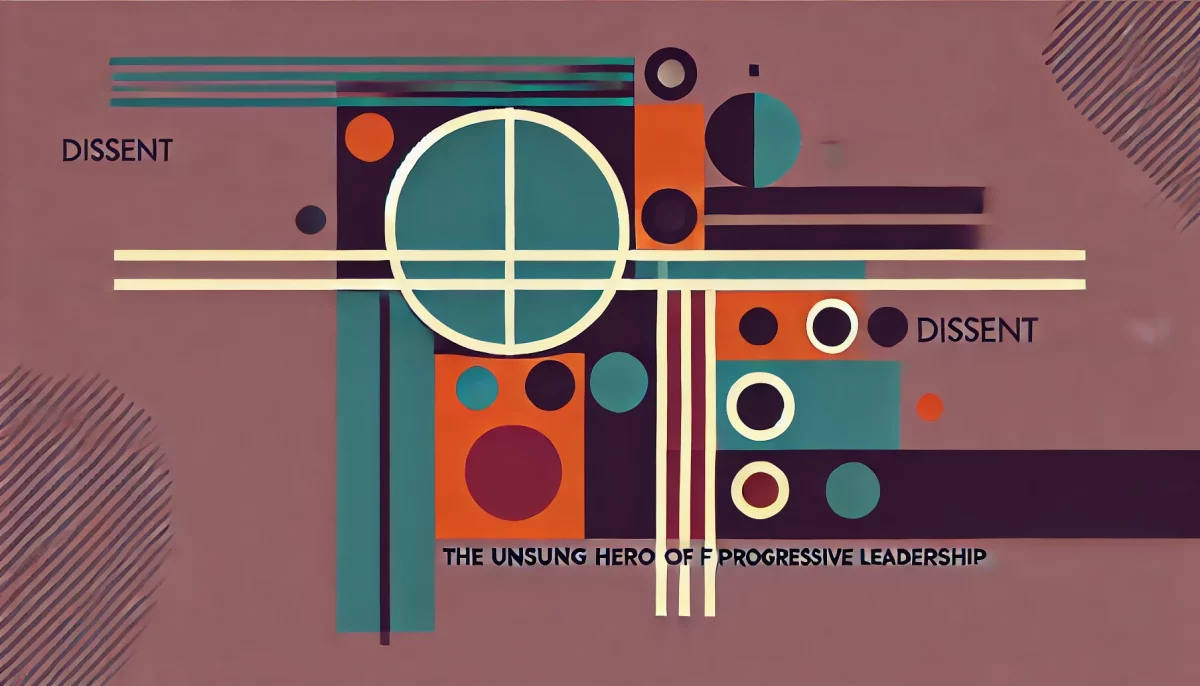Blog

Dissent: The Unsung Hero of Progressive Leadership
In the interplay of organizational management, dissent often finds itself in the shadows, misconstrued as a harbinger of disloyalty or discord. However, beneath this superficial, fear-driven interpretation lies the true value of dissent – a powerful catalyst for innovation, growth, and enduring change in leadership dynamics. Distinguishing between dissent and disloyalty is pivotal for leaders aiming to harness the true potential of their teams. Whereas disloyalty signifies a fundamental breach of trust, dissent represents a divergence of opinions or ideas, grounded in a shared commitment to the organization’s success.
Dissent is the crucible in which innovative ideas are forged. It challenges the status quo, provokes critical thinking, and unveils new perspectives that can propel an organization forward. By questioning existing practices and assumptions, dissent prevents stagnation and encourages a culture of continuous improvement. The history of business is littered with case studies where dissent was the linchpin for breakthrough innovations. From the creation of the Post-it Note by 3M to the reinvention of the digital music landscape by Apple, dissenting voices were crucial in challenging prevailing norms and ushering in revolutionary products and services.
Leaders who recognize the value of dissent adopt strategies that encourage open communication, create safe spaces for voicing differing opinions, and foster a culture of respect and mutual trust. Such leaders are adept at managing dissent by actively listening, engaging in constructive dialogue, and integrating diverse viewpoints into decision-making processes. The goal is to transform potential conflicts into collaborative solutions that drive the organization forward.
The cultural dimensions of dissent vary significantly across regions, influenced by societal norms, values, and the degree of tolerance for individual expression. In cultures with high power distance, dissent may be less common or openly expressed due to the emphasis on hierarchy and conformity. Conversely, in cultures that value individualism and low power distance, dissent is often more readily expressed and encouraged as a means of fuelling innovation and promoting critical thinking. Understanding these cultural nuances is crucial for global leaders in effectively managing dissent within their organizations.
A CEO named Victor Ho, cofounder of a customer loyalty company that has raised more than $100 million in venture funding, said this: “The strongest lesson I learned at McKinsey that I now share with every new hire is what they call the ‘obligation to dissent,” he told the New York Times. “It means that the youngest, most junior person in any given meeting is the most capable to disagree with the most senior person in the room.” (True Leaders Believe Dissent Is an Obligation by Bill Taylor)
In conclusion, dissent is not a threat to organizational harmony but an invaluable asset for progressive leadership. It is the dissenting voices that often illuminate paths to groundbreaking innovations and strategic pivots. Leaders who embrace and manage dissent effectively unlock the potential for significant advancements, ensuring their organizations remain resilient, adaptive, and constantly evolving in the face of change.

